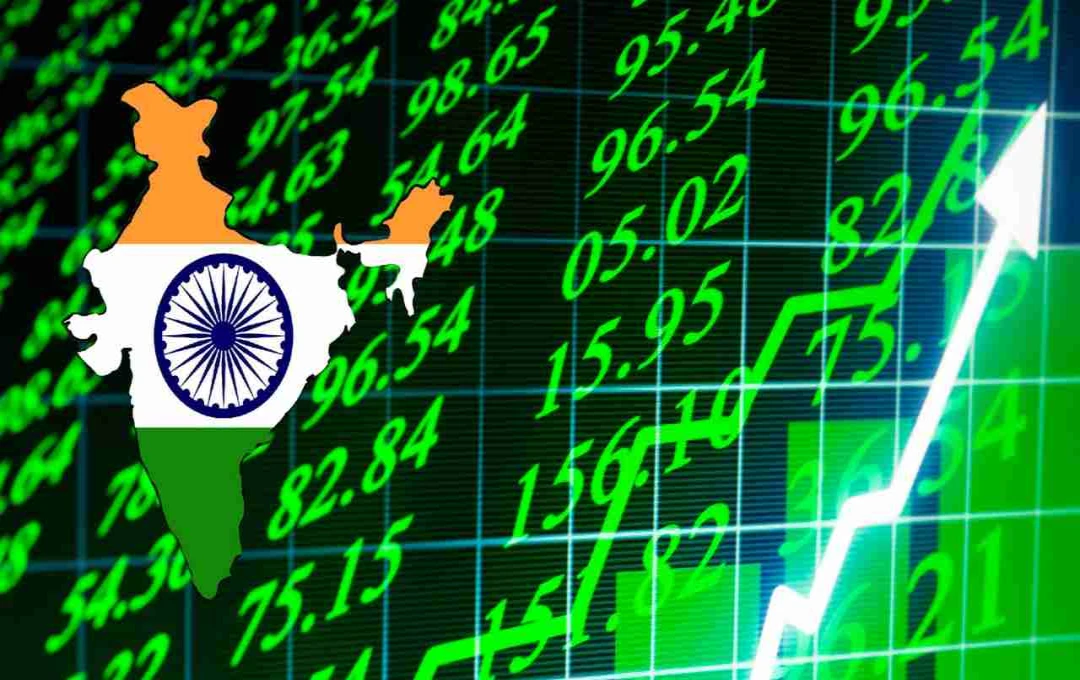India's stock market has recently made significant strides, establishing its prominence on the global stage. A recent report indicates that India's market capitalization has increased by over 21 percent.
New Delhi: India's equity market has demonstrated its strength impressively on a global scale. Since March 2025, the Indian stock market has witnessed an unprecedented surge of $1 trillion in market capitalization. This remarkable growth has propelled India to become the fifth-largest equity market globally, after the United States, China, Japan, and Hong Kong. Experts attribute this growth to India's economic strength, investor confidence, and the positive policies of the domestic market.
India's Market Capitalization Surge – An Overview

Internationally, India's market capitalization has registered an increase of over 21 percent, the highest among the top 10 equity markets. During this period, the major benchmarks, Sensex and Nifty, strengthened by 12.5 percent and 13.5 percent respectively. Since March 2025, Indian listed companies have added $1 trillion in market cap, further solidifying their economic influence.
This growth is not merely numerical; it reflects India's rapidly expanding economy and the increasing interest from investors. Behind this stellar performance are the confidence of domestic investors, along with government policy initiatives and economic reforms.
Contribution of a Strong Domestic Investor Base

A major reason for this market strength has been the consistent buying by Domestic Institutional Investors (DIIs). In June 2024, domestic investors purchased shares worth ₹25,510 crore, significantly mitigating the selling pressure from Foreign Institutional Investors (FIIs).
The active participation of domestic investors provides stability and strength to the market, especially when uncertainties prevail in global markets. Experts believe this confidence from domestic investors is a positive sign for the stability and long-term growth of the Indian market.
Impact of Global Conditions
Although trade talks between the US and China, global economic uncertainty, and fluctuating fund flows continue on a global scale, India's stock market has remained b despite these conditions.
Potential trade agreements between the US and China have generated a wave of optimism in global markets, a benefit also reaped by the Indian market. Furthermore, the increasing inflow of Foreign Portfolio Investors (FPI) investments into India has also contributed to the market's rise.
Improved Nifty and Sensex Figures
Since March 2025, both the Sensex and Nifty have shown a b surge. The Sensex has reached 82,515, while the Nifty has crossed 25,141 points. Both indices have surpassed their previous highs, delivering good returns to investors.
Experts believe this rally reflects not only the increasing expectations of investors but also the fundamental strength of the Indian economy.
Government's Policy Role and Economic Reforms
Economic reform initiatives implemented by the Indian government, increased investment in infrastructure, and campaigns like Digital India and Make in India have helped boost investor confidence in the market.
Furthermore, the government's efforts to maintain financial stability and control the fiscal deficit have kept the market's direction positive. This has attracted investors to long-term investments in India.
Future Prospects and Challenges
According to experts, if the current trend continues, India's equity market will expand further in the coming years. It is estimated that India's market capitalization could reach $10 trillion by 2030.
However, some risks remain for investors. Global economic uncertainties, fluctuations in interest rates, and volatile flows of foreign investment could affect market momentum. Therefore, vigilance and continuous improvement are necessary for domestic investors and the government.














